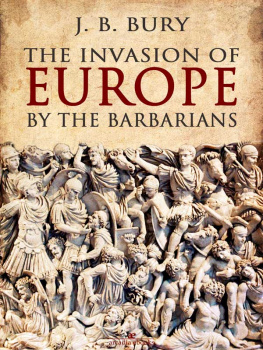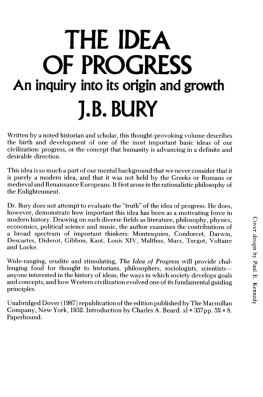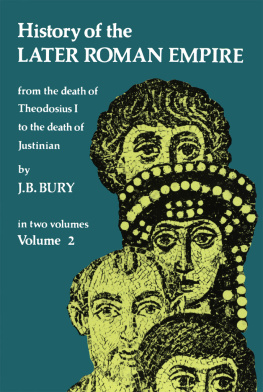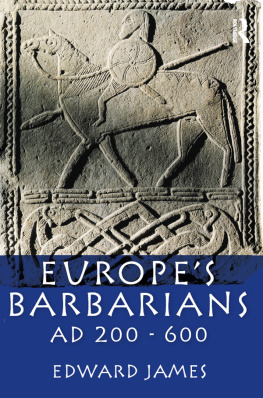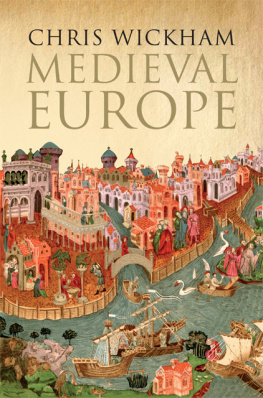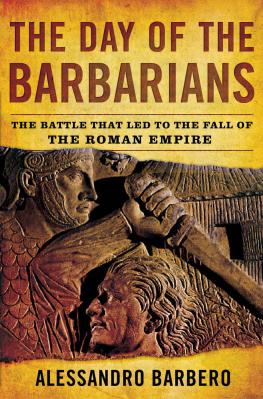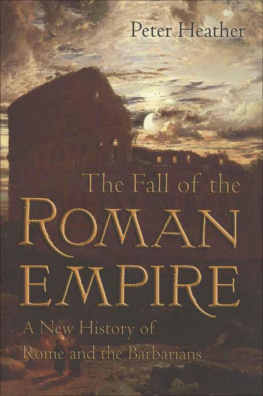Chapter One
The Germans and their Wanderings
The present series is designed to give a broad and general view of the long sequence of the migratory movements of the northern barbarians which began in the third and fourth centuries A.D. and cannot be said to have terminated till the ninth. This long process shaped Europe into its present form, and it must be grasped in its broad outlines in order to understand the framework of modern Europe.
There are two ways in which the subject may be treated, two points of view from which the sequence of changes which broke up the Roman Empire may be regarded. We may look at the process, in the earliest and most important stage, from the point of view of the Empire which was being dismembered or from that of the barbarians who were dismembering it. We may stand in Rome and watch the strangers sweeping over her provinces; or we may stand east of the Rhine and north of the Danube, amid the forests of Germany, and follow the fortunes of the men who I issued thence, winning new habitations and entering on a new life. Both methods have been followed by modem writers. Gibbon and many others have told the story from the side of the Roman Empire, but all the principal barbarian peoples not only those who founded permanent states, but even those who formed only transient kingdoms have had each its special historian. One naturally falls into the habit of contemplating these events from the Roman side because the early part of the story has come down to us in records which were written from the Roman side. We must, however, try to see things from both points of view.
The barbarians who dismembered the Empire were mainly Germans. It is not till the sixth century that people of another race the Slavs appear upon the scene. Those who approach for the first time the study of the beginnings of medieval history will probably find it difficult to group and locate clearly in their minds the multitude of Germanic peoples who surge over the scene in distracting confusion. The apparent confusion vanishes, of course, with familiarity, and the movements fall into a certain order. But at the very outset the study of the period may be simplified by drawing a line of division within the Germanic world. This capital line of division is geographical, but it has its basis in historical facts. It is the distinction of the West Germans from the East Germans. To understand this division we must go back for a moment into the early history of the Germans.
In the second millennium B.C. the homes of the Germanic peoples were in southern Scandinavia, in Denmark, and in the adjacent lands between the Elbe and the Oder. East of them beyond the Oder were Baltic or Lettic peoples, who are now represented by Lithuanians and Letts. The lands west of the Elbe, to the Rhine, were occupied by Celts.
After 1000 B.C. a double movement of expansion began. The Germans between the Oder and the Elbe pressed westward, displacing the Celts. The boundary between the Celts and Germans advanced to the west, and by about 200 B.C. it had been pushed forward to the Rhine, and southward to the Main. Throughout this period the Germans had been also pressing up the Elbe. Soon after 100 B.C. southern Germany had been occupied, and they were attempting to flood Gaul. This inundation was stemmed by Julius Caesar. Now all these peoples who expanded over western Germany from their original seats between Oder and Elbe we will class as the West Germans.
The other movement was a migration from Scandinavia to the opposite coasts of the Baltic, between the Oder and the Vistula, and ultimately beyond the Vistula. This migration seems to have taken place at a later period than the beginning of the expansion of the West Germans. It is placed by a recent authority, Kossinna, in the later bronze period, between 600 and 300 B.C. By the latter date they seem to have pressed right up to the Vistula to the neighbourhood of the Carpathians. These comers from Scandinavia formed a group which in dialect and customs may be distinguished from the West Germans, as well as in their geographical position; and we designate them as East Germans. The distinction is convenient because the historical roles of these two divisions of the German race were different. There is also a third division, the NorthGermans of Scandinavia; but with them we are not concerned.
In the period with which we have to do, the West Germans are comparatively settled geographically, whereas the East Germans are migratory. Now it is not difficult to understand why this is so. All the ancient Germans were shepherds and hunters. They had some agriculture before the time of Julius Caesar, but not much. Central Europe till well into the Middle Ages consisted largely of dense forests and marshlands. There were, however, districts free from wood, and the absence of wood was the circumstance which largely determined the early settlements of the Germans. Geographers are able to fix the position of such tracts of steppe land by means of the remains of steppe plants plants which cannot live either in the forest or on cultivated soil and also by the remains of animals which are characteristic of the steppe. Cases of such land, for instance, are the plain of the upper Rhine and the eastern portion of the Harz district.
When a people settled down in such a district they could live, as a rule peaceably and contentedly, on their flocks and herds, until their number began to increase considerably. Then their pasture land, limited by the surrounding forests, became insufficient, and presently the food question grew pressing. There were three solutions open: they might take to agriculture, which would enable them to support a far larger population in the same area; they might extend their pasturage by clearing the forest; or they might reduce their superfluity of population by emigrating. The third resource was that which they regularly adopted; the other two were opposed to their nature and instincts. A portion would emigrate and seize a new habitation elsewhere. This, of course, meant war and conquest. This process went on at the expense of the Celts until Central Europe became entirely Germanised. They would then have naturally advanced westward or southward, but the Roman power hindered them. Thus the Western Germans, having no further room for expansion, shut in on the east by their own kinsfolk who were tightly packed, on the west and south by the Roman Empire, were forced to find another solution for the food question. Perforce they took to tilling the land. We have direct evidence for this important change in their habits. Caesar describes the Germans as mainly a pastoral people: they did practise agriculture, but it was little. About one hundred and fifty years later Tacitus describes them as practising agriculture. This transformation, then, from a pre-eminently pastoral state to an agricultural state came about during the century after their geographical expansion was arrested by the power of Rome. That period was a critical stage in their development. Now remember that all this applies to the West Germans: it is the West Germans to whom the descriptions of Caesar and Tacitus relate. The East Germans beyond the Elbe were by no means in the same position. They were not hemmed in in the same way. Their neighbours to the east and south were barbarians Slavs and others who did not hinder their freedom of movement, and so there was no motive to give up their pastoral and migratory habits.
You can now understand how in the second century A.D. the East and West Germans are distinguished not only by geographical position but also by the different stages of civilisation which they have reached. The West Germans are agricultural and have attained those relatively settled habits which agriculture induces. The East Germans are chiefly pastoral and represent a stage from which the West Germans began to emerge a couple of centuries before.

